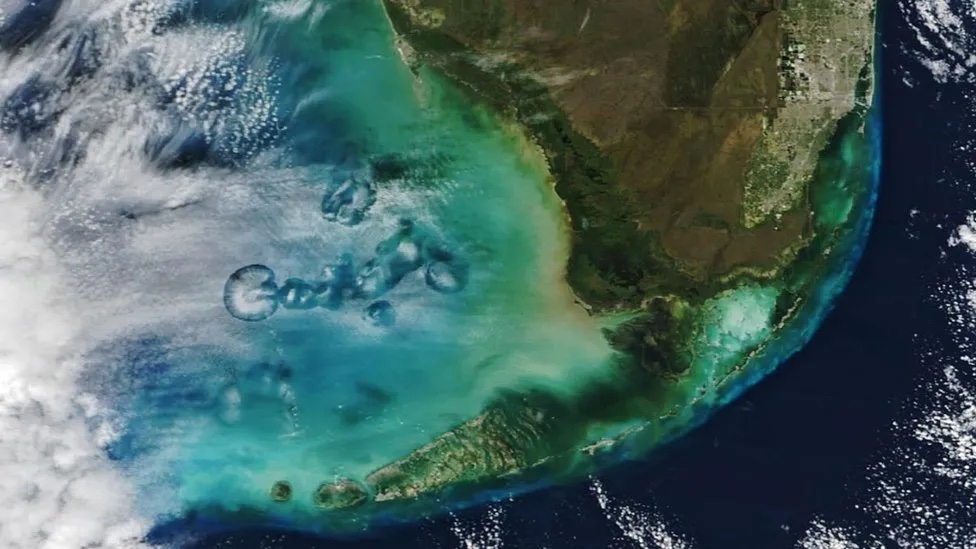Nasa has released a snapshot of a phenomenon that has been the subject of legend for a long time.
Nasa space cameras
Nasa’s satellite cameras cover most of the Earth’s surface every one to two days and are able to gather long-term observations about environmental changes thanks to the use of 36 spectral bands, including visible to thermal infrared wavelengths. These detect chlorophyll and water vapor. They can monitor wildfires, reveal algal bloom and plankton levels in the oceans, as well as see how healthy soil is.
Now, a photo taken at the end of January by the agency’s Terra satellite space camera, MODIS, has captured what is commonly known as fallstreak holes or “hole-punch clouds” – large roundish openings in a thick cloudy sky. The image Nasa released was taken off Florida’s west coast above the Gulf of Mexico.

The mystery of the ‘cavum cloud‘
Due to their distinctive elliptical shape, the holes seen in the Nasa shot have generated speculation since the 1940s by both scientists and members of the public, with some saying they must be caused by UFOs.
The mystery of the ‘cavum cloud’ was not unravelled until 2010 and 2011, when a team at the University Corporation for Atmospheric Research (UCAR) proved that cavum clouds were formed by airplanes cutting through altocumulus layers.
What made the UCAR study so seminal was the way it blended scrutiny of flight data with satellite surveillance and meteorological models. The combination showed that the shape of the void left by the aircraft varies according to the angle the plane takes through clouds.

A pattern made by 1000 flights
The intriguing holes can appear small and round or saucer-shaped. Small round gaps in the cloud are created by the plane taking a sharp angle, while more oblique angles produce the elongated holes with so-called “virga” trails – disappearing trails of mist left by the falling ice. What’s going on behind the scenes? The planes disturb the supercooled droplets in the -15°C air in the clouds. These expand rapidly and cool further by up to 20°C, turning to ice, and dropping out of the sky.
Many types of plane, from commercial passenger aircraft, to military, regional and private jets can create the effect. On the day in question this January, it was Miami airport traffic that was causing the pattern. The area is known for cavum clouds due to the interaction of over 1000 flights a day and the prevailing atmospheric conditions.










Más historias